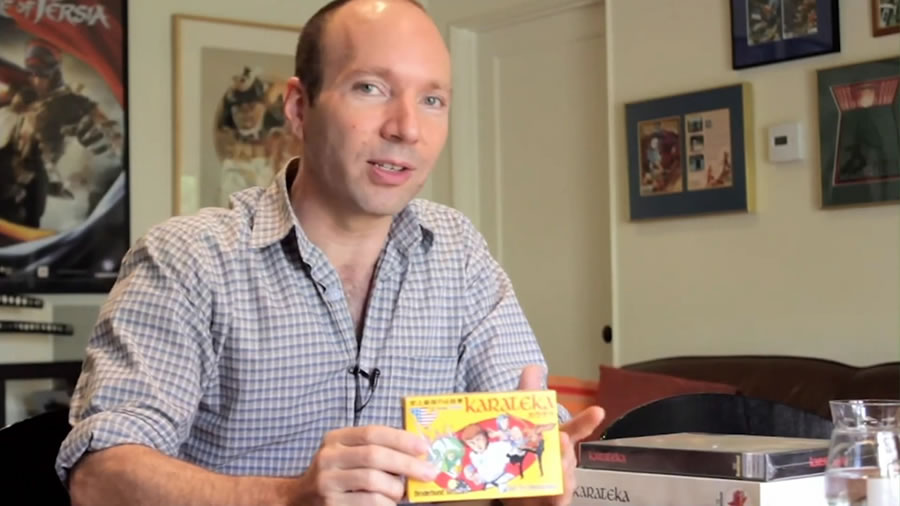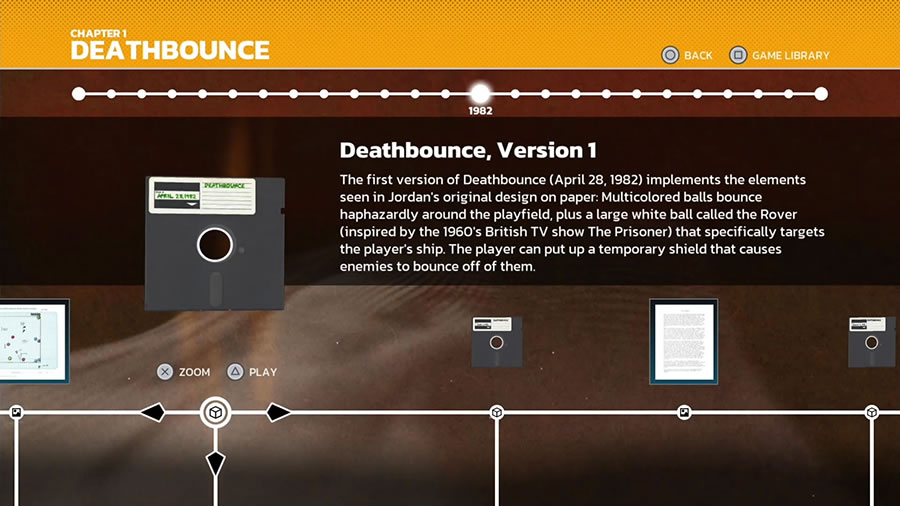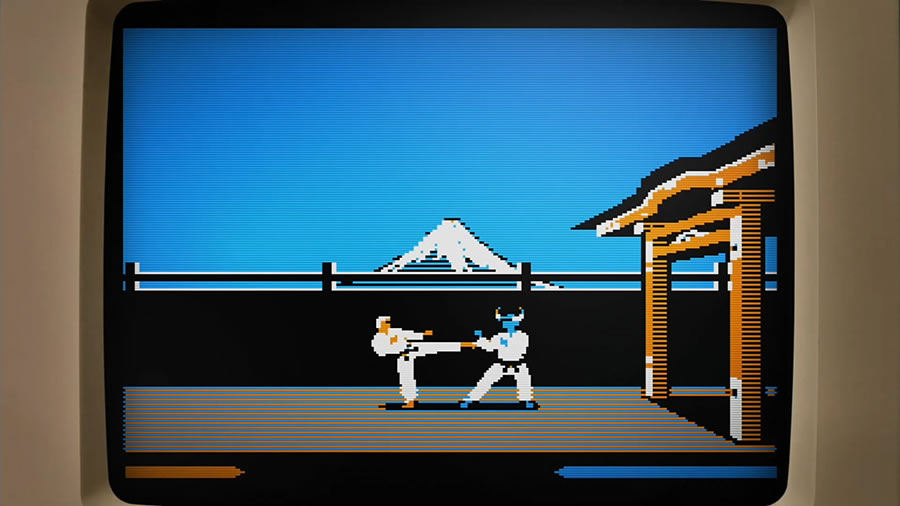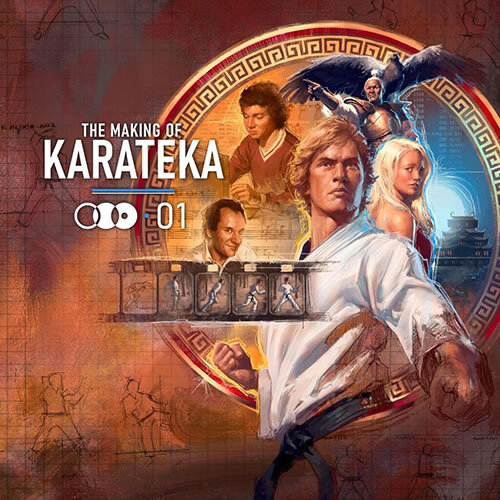- CLASSIC MAGAZINES
- REVIEW CREW
A show recapping what critics thought back
when classic games first came out! - NEXT GENERATION'S BEST & WORST
From the worst 1-star reviews to the best
5-stars can offer, this is Next Generation! - NINTENDO POWER (ARCHIVE)
Experience a variety of shows looking at the
often baffling history of Nintendo Power! - MAGAZINE RETROSPECTIVE
We're looking at the absolutely true history of
some of the most iconic game magazines ever! - SUPER PLAY'S TOP 600
The longest and most ambitious Super NES
countdown on the internet! - THEY SAID WHAT?
Debunking predictions and gossip found
in classic video game magazines! - NEXT GENERATION UNCOVERED
Cyril is back in this spin-off series, featuring the
cover critic review the art of Next Generation! - HARDCORE GAMER MAGAZING (PDF ISSUES)
Download all 36 issues of Hardcore Gamer
Magazine and relive the fun in PDF form!
- REVIEW CREW
- ELECTRONIC GAMING MONTHLY
- ELECTRONIC GAMING MONTHLY RANKS
From Mario to Sonic to Street Fighter, EGM
ranks classic game franchises and consoles! - ELECTRONIC GAMING MONTHLY BEST & WORST
Counting down EGM’s best and worst reviews
going year by year, from 1989 – 2009! - ELECTRONIC GAMING BEST & WORST AWARDS
11-part video series chronicling the ups and
downs of EGM’s Best & Worst Awards!
- ELECTRONIC GAMING MONTHLY RANKS
- GAME HISTORY
- GAME OVER: STORY BREAKDOWNS
Long-running series breaking down game
stories and analyzing their endings! - A BRIEF HISTORY OF GAMING w/ [NAME HERE]
Real history presented in a fun and pithy
format from a variety of game historians! - THE BLACK SHEEP
A series looking back at the black sheep
entries in popular game franchises! - INSTANT EXPERT
Everything you could possibly want to know
about a wide variety of gaming topics! - FREEZE FRAME
When something familiar happens in the games
industry, we're there to take a picture! - I'VE GOT YOUR NUMBER
Learn real video game history through a series
of number-themed episodes, starting at zero! - GREAT MOMENTS IN BAD ACTING
A joyous celebration of some of gaming's
absolute worst voice acting!
- GAME OVER: STORY BREAKDOWNS
- POPULAR SHOWS
- DG NEWS w/ LORNE RISELEY
Newsman Lorne Riseley hosts a regular
series looking at the hottest gaming news! - REVIEW REWIND
Cyril replays a game he reviewed 10+ years
ago to see if he got it right or wrong! - ON-RUNNING FEUDS
Defunct Games' longest-running show, with
editorials, observations and other fun oddities! - DEFUNCT GAMES QUIZ (ARCHIVE)
From online quizzes to game shows, we're
putting your video game knowledge to the test!- QUIZ: ONLINE PASS
Take a weekly quiz to see how well you know
the news and current gaming events! - QUIZ: KNOW THE GAME
One-on-one quiz show where contestants
find out if they actually know classic games! - QUIZ: THE LEADERBOARD
Can you guess the game based on the classic
review? Find out with The Leaderboard!
- QUIZ: ONLINE PASS
- DEFUNCT GAMES VS.
Cyril and the Defunct Games staff isn't afraid
to choose their favorite games and more! - CYRIL READS WORLDS OF POWER
Defunct Games recreates classic game
novelizations through the audio book format!
- DG NEWS w/ LORNE RISELEY
- COMEDY
- GAME EXPECTANCY
How long will your favorite hero live? We crunch
the numbers in this series about dying! - VIDEO GAME ADVICE
Famous game characters answer real personal
advice questions with a humorous slant! - FAKE GAMES: GUERILLA SCRAPBOOK
A long-running series about fake games and
the people who love them (covers included)! - WORST GAME EVER
A contest that attempts to create the worst
video game ever made, complete with covers! - LEVEL 1 STORIES
Literature based on the first stages of some
of your favorite classic video games! - THE COVER CRITIC
One of Defunct Games' earliest shows, Cover
Critic digs up some of the worst box art ever! - COMMERCIAL BREAK
Take a trip through some of the best and
worst video game advertisements of all time! - COMIC BOOK MODS
You've never seen comics like this before.
A curious mix of rewritten video game comics!
- GAME EXPECTANCY
- SERIES ARCHIVE
- NINTENDO SWITCH ONLINE ARCHIVE
A regularly-updated list of every Nintendo
Switch Online release, plus links to review! - PLAYSTATION PLUS CLASSIC ARCHIVE
A comprehensive list of every PlayStation
Plus classic release, including links! - RETRO-BIT PUBLISHING ARCHIVE
A regularly-updated list of every Retro-Bit
game released! - REVIEW MARATHONS w/ ADAM WALLACE
Join critic Adam Wallace as he takes us on a
classic review marathon with different themes!- DEFUNCT GAMES GOLF CLUB
Adam Wallace takes to the links to slice his way
through 72 classic golf game reviews! - 007 IN PIXELS
Adam Wallace takes on the world's greatest spy
as he reviews 15 weeks of James Bond games! - A SALUTE TO VAMPIRES
Adam Wallace is sinking his teeth into a series
covering Castlevania, BloodRayne and more! - CAPCOM'S CURSE
Adam Wallace is celebrating 13 days of Halloween
with a line-up of Capcom's scariest games! - THE FALL OF SUPERMAN
Adam Wallace is a man of steel for playing
some of the absolute worst Superman games! - THE 31 GAMES OF HALLOWEEN
Adam Wallace spends every day of October afraid
as he reviews some of the scariest games ever! - 12 WEEKS OF STAR TREK
Adam Wallace boldly goes where no critic has
gone before in this Star Trek marathon!
- DEFUNCT GAMES GOLF CLUB
- DAYS OF CHRISTMAS (ARCHIVE)
Annual holiday series with themed-episodes
that date all the way back to 2001!- 2015: 30 Ridiculous Retro Rumors
- 2014: 29 Magazines of Christmas
- 2013: 29 Questionable Power-Ups of Christmas
- 2012: 34 Theme Songs of Christmas
- 2011: 32 Game Endings of Christmas
- 2010: 31 Bonus Levels of Christmas
- 2009: 30 Genres of Christmas
- 2008: 29 Controls of Christmas
- 2007: 34 Cliches of Christmas
- 2006: 33 Consoles of Christmas
- 2005: 32 Articles of Christmas
- 2004: 31 Websites of Christmas
- 2003: 29 Issues of Christmas
- 2002: 28 Years of Christmas
- 2001: 33 Days of Christmas
- NINTENDO SWITCH ONLINE ARCHIVE
- REVIEW ARCHIVE
- FULL ARCHIVE
The Making of Karateka
So far this year, we’ve watched movies based on the Beanie Baby bubble, the creation of Flamin’ Hot Cheetos, the invention of the Blackberry phone, the negotiation over Tetris and all of the meetings it took Nike to make Air Jordan a thing. Some of those were fun, but if you’re looking for a making-of story that is compelling without needing to resort to fictionalized car chases, then let me introduce you to The Making of Karateka, a game that not only introduces one of the most influential games of all time to a brand-new audience, but also sets a new high-water mark for all classic game re-releases. Get ready to kick a bird in its face, because this is my review of The Making of Karateka by Digital Eclipse.
The one thing that you need to know about The Making of Karateka is that, despite what the title suggests, this is not the story of Karateka. In reality, this is the origin tale of Jordan Mechner, a teenage artist who stumbled his way into designing video games and eventually goes on to make one of the most enduring franchises of all time. It’s a story about struggle, ambition and what you do when the industry rejects you, and this well-crafted package allows us to be there every step of the way.
Jordan Mechner is probably best-known for his 1989 action game Prince of Persia, but before that was Karateka. Released first on the Apple IIe, this was a side-scrolling brawler where a kung fu master ascends a mountain in order to fight through Akuma’s evil fortress in order to rescue the kidnapped Princess Mariko. On paper, that sounds like every other ninja game released in the 1980s, but what sets Karateka apart is the silky-smooth rotoscoped animation and the incredibly intense one-on-one fights with the fortress guards. This was a game that managed to overcome the limitations of the hardware to create a cinematic experience that was unlike anything else on market.
Using a similar interface to Atari 50: The Anniversary Celebration, Digital Eclipse takes us back to the very beginning, when Jordan was little more than a caricature artist saving up for a new computer. Through interviews, images and documentary footage, we see Jordan learn how to code and eventually create a shoot ‘em up of his own named Asteroid Blaster, an action game with more than a passing resemblance to Atari’s 1979 game Asteroids. What’s cool about this package is how we go from reading about these early games to then having an opportunity to actually play them.
For me, seeing the various prototypes and variations was one of my favorite parts of The Making of Karateka. There’s a point early on when Jordan, bitter after getting screwed by a previous publisher, pitches his newest game to Broderbund. That game was called Deathbounce, and it combined the gameplay of Asteroids with a bunch of colored balls bouncing around the screen. What’s so captivating is how we’re able to read the letters between the developer and publisher, showing the push and pull of the creative process. You’ll read through Broderbund’s list of notes and then be able to play Jordan’s next revision, giving you a window into how a creative person can expand and improve on their ideas with critique. And these are not subtle changes, as the four different versions introduce major structural shifts, the introduction of new enemies, better gameplay and more.
I bring all this up because this making-of experience shines a light on aspects of the gaming world we rarely think about. Here we see a game literally taking shape through a back-and-forth correspondence, only to have it end with crushing disappointment. As somebody who has freelanced for a lot of companies over the years, I found myself relating to Jordan’s frustrations. That feeling that what is on the screen is good enough, yet not good enough all at the same time. The need to hit a moving target that might not even be there when you’ve addressed all of the concerns. When was the last time you saw any of that in a video game?
By the time we get to Karateka, we’re already emotionally invested in Jordan’s story and want him to succeed. We root him on as he toys around with rotoscope animation and cheer when we see his father literally climb on the hood of a car just so Jordan can animate our hero ascending the mountain. The game takes you through every step of the process, from the inspiration of the background image to the importance of the music to create drama. All this is even more impressive as Jordan himself explains the limitations of the Apple II hardware, humbly reminding you that there were no blueprints for making cinematic games back in the day. What he was doing had never been done before.
That’s why it’s so exciting to see Karateka slowly come together. First, it’s through Jordan’s prototype version, which is a much shorter and simpler version of the game. From there we get one revision after another. By the time we get to the finished product, we can finally exhale. Through years of work and persistence, Jordan Mechner finally made a game that people could buy on the store shelves. We can finally play the masterpiece that is Karateka.
Of course, that’s not where the story ends. This making-of experience later goes into marketing the game, as well as porting it to the Commodore 64 and Atari computers (both of which are playable in this package). There’s a treasure trove of marketing materials and magazine articles and writer-ups, including one 1985 review where the critic praises the game for having a pause button. We’re also treated to look at the notes and ideas swirling around the proposed Karateka II, a game that never came to be. From the early days of wanting to draw comics to the aftermath of his first big game, The Making of Karateka chronicles the rise of one of gaming’s true pioneers.
Many of my favorite moments in this documentary experience involves a very friendly and personable Jordan being interviewed with his father, Francis Mechner. These two have great rapport and it’s so much fun watching them reminisce about the big and small moments along the way. I was surprised by how much Francis helped in development, especially when it came to creating the iconic music. I loved the conversations and tangents these two went on and didn’t want it to end.
That’s not to say the rest interviews are dull, because they bring a new layer of context that is important when telling the story of Karateka. We hear things from the perspective of Broderbund, as well as the people who worked hard to port the game to other computers. We also check in with the developers that were inspired by Jordan and his seminal game, including John Tobias, who would later be influenced to make his own fighting game – Mortal Kombat. Once again, Digital Eclipse is able to show us the importance of Karateka from so many different sides.
For those who just want to get to the games, this package comes with fourteen to choose from. We get both the unreleased Asteroid Blaster and Deathbounce, along with a bunch of different variations of both. There are also a handful of versions of Karateka to play, including the early prototype version and the ports on the Apple, Atari and Commodore computers. And if that wasn’t enough, we also get newly enhanced versions of Deathbounce and Karateka, which includes an audio commentary that sheds even more light on the importance of the game. From both a historical perspective, this package gives Karateka fans pretty much everything they could possibly want.
This is how all classic games should be re-released. I want to see the history unfold and listen to the developers put their game in the proper context, even if it’s something silly like Bubsy the Bobcat. I get a headache every time I start thinking about how many influential games deserve to get the Gold Master Series treatment, and I can’t wait to see what Digital Eclipse goes after next. This is not only a new high-water mark for video game re-releases, but it’s the closest the video games industry has gotten to The Criterion Collection.
HOME |
CONTACT |
NOW HIRING |
WHAT IS DEFUNCT GAMES? |
NINTENDO SWITCH ONLINE |
RETRO-BIT PUBLISHING
Retro-Bit |
Switch Planet |
The Halcyon Show |
Same Name, Different Game |
Dragnix |
Press the Buttons
Game Zone Online | Hardcore Gamer | The Dreamcast Junkyard | Video Game Blogger
Dr Strife | Games For Lunch | Mondo Cool Cast | Boxed Pixels | Sega CD Universe | Gaming Trend
Game Zone Online | Hardcore Gamer | The Dreamcast Junkyard | Video Game Blogger
Dr Strife | Games For Lunch | Mondo Cool Cast | Boxed Pixels | Sega CD Universe | Gaming Trend
Copyright © 2001-2025 Defunct Games
All rights reserved. All trademarks are properties of their respective owners.
All rights reserved. All trademarks are properties of their respective owners.






































